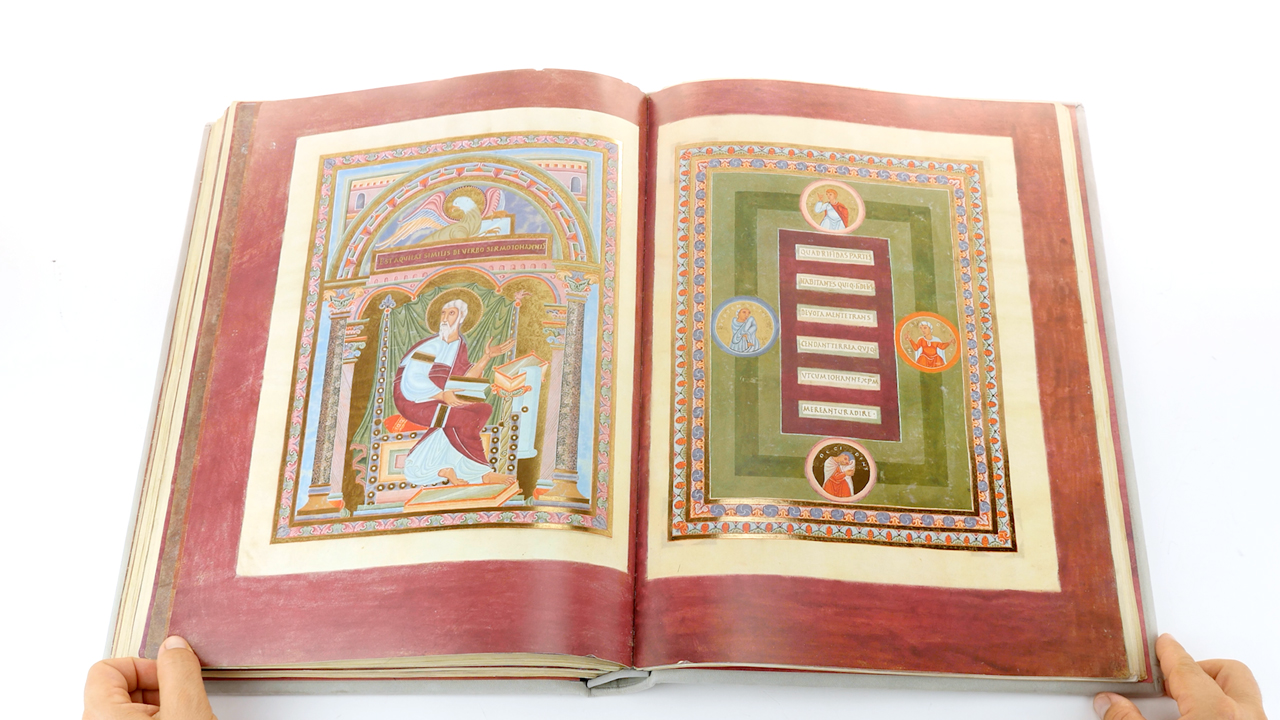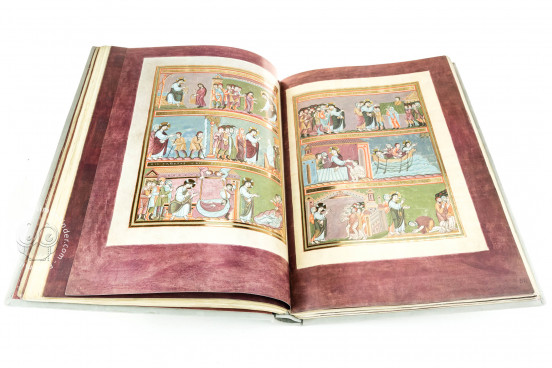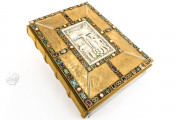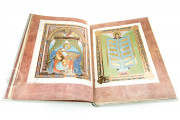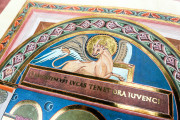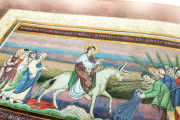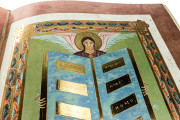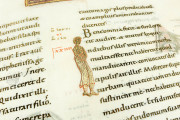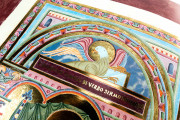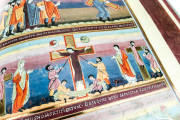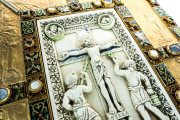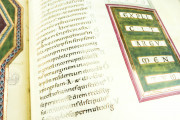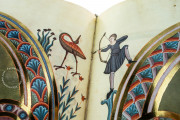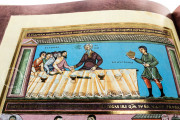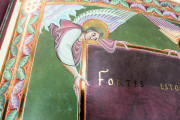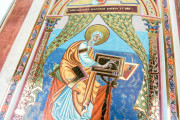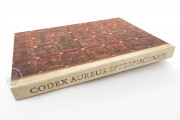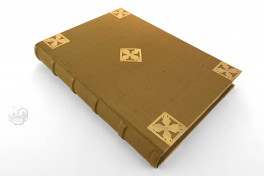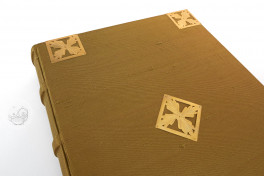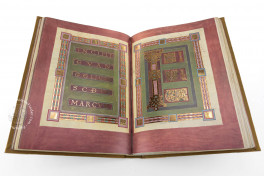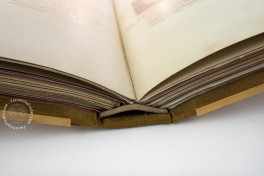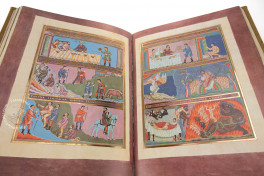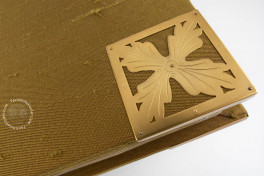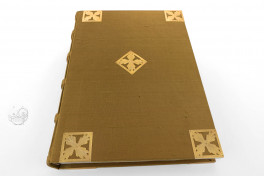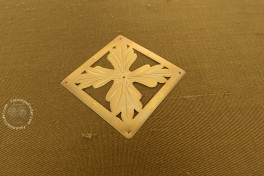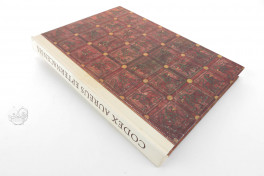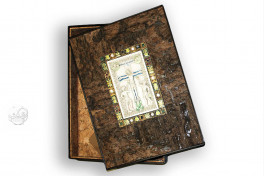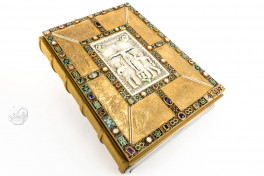The Codex Aureus of Echternach is one of the most remarkable manuscripts from the Ottonian era. The codex, also known as Codex Aureus Epternacensis, was written and illuminated in the first half of the eleventh century and it features sixteen full-page miniatures, five evangelist portraits, ten canon tables, nine full-page initials and sixteen half-page initials.
Written in Latin, the manuscript was created in the scriptorium of the Benedictine Abbey at Echternach around 1030.
Codex Aureus of Echternach: a Masterpiece of Ottonian Art
From an iconographic standpoint, the Codex Aureus of Echternach is justly considered to be one of the most magnificent Ottonian manuscripts, as it features sixty pages of pictorial decorative work and over 500 initials, more than any other manuscript of the same era, with the exception of the Golden Gospels of Henry III.
Some ornamental pages (those preceding the gospel texts), with their use of purple and animal medallions, seem to echo Byzantine silk fabrics. In terms of decorative apparatus, the Codex Aureus of Echternach exhibits a somewhat earlier tradition from Trier which saw the use of contrasting bands of colors, specifically, green and purple.
Narrative Illustrations and Color Scheme
The full-page miniatures – each providing three scenes – are to be considered a very useful narrative tool. An example are the illustrations relating to the parable of the rich man and the beggar Lazarus (fol. 78r): one scene displays the rich man eating from a wealthy selection of food while the beggar is outside starving to death.
The other two scenes show the results of each figure's actions, so, while Lazarus is welcomed by Abraham in Paradise, the rich man's soul is shown to be dragged to Hell, for he had a privileged life surrounded by mourners that he refused to help.
The color scheme of the miniatures is certainly helpful for a better comprehension of the images, so the readers can generally associate the color blue with more soothing contexts, while the color red to more negative representations – usually the fire of Hell.
A Work Inspired by the Master of the Registrum Gregorii
Although recalling the paintings produced in the Trier scriptorium by the Master of the Registrum Gregorii, the illustrations are simplified and are probably the work of two illuminators: one being the senior artist and the other, his pupil, whose talents are to be recognized in the rendition of narrative illustrations.
The manuscript – currently treasured in the Germanisches Nationalmuseum – remained in Echternach (modern Luxembourg) until the French Revolution. At some point between 1795 and 1796 the abbey was closed down resulting in the manuscript being purchased by Duke Ernst II of Saxe-Coburg and Altenburg.
The codex remained in the Coburg-Gotha family for over a century, until they were forced to sell it due to financial issues, in 1955, to the Germanic National Museum in Nuremberg.
Binding description
Unlike many medieval manuscripts, the Codex Aureus of Echternach still bears its original cover, which dates about half a century earlier than the work it contains. The cover appears to have been made in Trier beween 985 and 987 bestowed by Empress Theophanu and her son Emperor Otto III.
We have 3 facsimiles of the manuscript "Codex Aureus of Echternach":
- Das Goldene Evangelienbuch von Echternach (Standard Edition) facsimile edition published by Mueller & Schindler, 1982
- Das Goldene Evangelienbuch von Echternach (Cork Lining Edition) facsimile edition published by Mueller & Schindler, 1982
- Das goldene Evangelienbuch von Echternach (Deluxe Edition) facsimile edition published by Mueller & Schindler, 1982

